QUESTIONS
SECTION 1:ART AND CRAFT.
- What is smudging technique?
- Spreading colour on a surface to make a picture.
- Picture making technique that involves painting.
- Using crayons to colour drawn pictures.
- Creating pictures using locally available materials.
- Why are some parts of the objects in the following picture not seen by all?
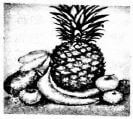
- They are not drawn
- They are overlapped
- They are not shaded
- They are in darkness
- What is crayon etching?
- Creating pictures on a crayon waxed surface with a sharp object
- Applying black Indian ink on a surface covered by crayons
- Making crayons from locally sustainable materials
- Using crayons to colour hand drawn pictures
- It is important to use bright colours in crayon etching because,
- a large portion of the surface is covered with black ink
- they are readily available
- the colours are easier to use
- of being easy to apply on a surface
- The sharp object used in crayon etching is called
- A pencil
- A stencil
- A decorating tool
- An etching tool
- Tonal variation is.........................
- value steps going from light to dark
- different colours used in a drawing
- varying thickness of lines used in a drawing
- using different types of paper for drawing
- How best should one add black to another colour when toning a colour?
- Adding colour black in small amounts
- Adding black to another colour at once
- Mixing white to black first before toning
- Allowing the colours to settle before mixing
- Which of the following is not a reason why proportion is important when drawing a human form?
- To achieve a realistic picture
- To create a balanced drawing
- To include all features of a human form
- To ensure some parts overlap on others
- Which one of the following is not a source of pictures for making montage composition?
- Printed photographs
- Old newspapers
- Used magazines
- Digital pictures
- From which of the following plants in the locality can we obtain fibres for weaving?
- Sisal plants
- Banana plants
- Coconut leaves
- Maize plants
- The weaving technique shown in the following picture is called the,
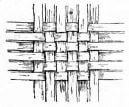
- twine technique
- basket technique
- mat technique
- criss crossing technique
- The following are items that can be made by weaving except
- floor mats
- baskets
- table mats
- brooms
- We obtain hides and skins from.
- cattle
- chicken
- insects
- trees
- The process of cutting long, thin straps of leather for binding is called.
- thonging
- stripping
- cutting
- shaping
- Which of the following materials is not required when making the following musical instrument?
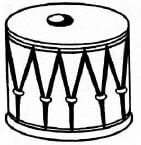
- Large empty container
- Leather pieces and straps
- Knives or chisel blades
- Nails or pins
SECTION 2:MUSIC
- How would you classify the instrument below!
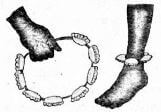
- Self sounding instrument.
- Wind instrument:
- String instrument.
- Percussion instrument
- Dance involves the movement of hands,..................................and.....................................
- Legs and waist.
- Nose and mouth.
- Shoulders and nose.
- Stomach and eyes.
- What is harmony?
- A combination of two or more notes sounded together.
- Tone color
- Quick or slow movement which may be lively or soothing.
- A single note played on an instrument.
- Which of the following is a good value to have in a song?
- Making the school unhappy, unhealthy and unsafe for children.
- Not respecting cultural similarities and differences.
- Showing respect to self and others.
- Not being responsible
- What kind of mood do funeral songs portray?
- Cheerful
- Happy
- Sad
- Energetic
- How do you tune a drum to produce a desired sound?
- Hold the drum tightly when playing
- Warm the membrane during the process of making the instrument
- Clean the membrane during the process of making the instrument
- Hit the drum using a lot of force
- When is the National Anthem not played?
- During sporting meets when a country has won an event.
- Entertainment.
- During assemblies
- At state functions
- Which of the following is not a percussion instrument?
- Dongo
- Drum
- Horn
- Marimba
- Which one below is not a type of song?
- Lullaby
- Singing games
- Work songs
- Dancing songs
- How many parts make a descant recorder?
- 1
- 2
- 3
- 4
SECTION 3: SOCIAL STUDIES.
- Which of the following is not a cardinal point of a compass?
- North
- South
- South west
- West
- If East is to the right of North, West is to the ................................of North.
- Right
- Left
- Centre
- Upwards
- While walking to the market, the sun appeared on the right side of Muga. Which direction was the market?
- North
- South
- South west
- West
- What is the importance of a compass in our daily life?
- Misleading us.
- Showing us direction.
- Giving us hope.
- Protecting us.
- Which county is the capital city of Kenya?
- Kisumu
- Mombasa
- Nakuru
- Nairobi
- Guyo's home is located in Moyale town, near the Kenya-Ethiopian border. In which county is his home located in?
- Mombasa
- Marsabit
- Garissa
- Samburu
- Which is the smallest county in Kenya?
- Mombasa
- Nairobi
- Marsabit
- Vihiga
- Indian Ocean neighbours the following counties except.
- Lamu
- Kilifi
- Taita Taveta
- Mombasa
- What is the importance of the following physical feature?
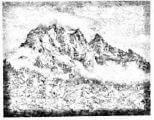
- Climbing and hiking
- Source of clay
- Source of fish
- Source of water
- People should......................................trees to protect the environment.
- Cut
- Plant
- Prune
- Water
- Which season is shown in the picture below?
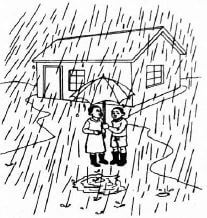
- Dry season
- Hot season
- Rainy season
- Cold season
- We harvest crops during ......................................season.
- Dry season
- Hot season
- Rainy season
- Cold season
- We do not cross flooded....................................during heavy rains.
- Mountains
- Springs
- Rivers
- Lakes
- Gumboots, warm clothes and...................................are used during the rainy season.
- Umbrella
- Sport shoes
- Vests
- Window curtains
- Places where work of art, culture and other artefact's are kept for public viewing are known as ...........................
- Monuments
- Libraries
- Museums
- Cultural centres
SECTION 4: CHRISTIAN RELIGIOUS EDUCATION.
- Who among the following people presides over a Christian marriage?
- Priest
- Teacher
- Judge
- Lawyer
- Which of the following is a division of the Bible?
- Genesis
- New Testament
- Matthew
- Luke
- In which Testament in the Bible is the book of Psalms found?
- New Testament
- First testament
- Old Testament
- Last Testament
- Which of the following cannot be found the Bible?
- Guiding us on what is right
- Advice on day to day life
- The prophecies of God
- A shopping list
- Which of the following children handled the Bible in the right way?
- Pere-Tearing the pages of his Bible
- Ramona-Writing in her Bible
- Wangui- Putting her Bible in a clean drawer
- Miriam- Leaves her Bible outside the house at night
- Which of the following people should not have authority over you?
- Stranger
- Class teacher
- Elder brother
- Parent
- Which of the following is a right way to spend money?
- Donating money to a children's home
- Using money for gambling
- Spending all your money on expensive clothes and shoes
- Buying expensive gifts for yourself
- Which of the following is not an attribute of God!
- God is jealous
- God is merciful
- God is holy
- God is powerful
- Which of the following is a good emotion?
- Bitterness
- Shame
- Happiness
- Guilty
- Which of the following books is found in the New Testament?
- Zachariah
- Joel
- Ruth
- John
SECTION 4: ISLAMIC RELIGIOUS EDUCATION.
- The first prophet of Allah was
- Adam
- Muharram
- Safar
- Rajab
- It is haram to sell
- Charcoal
- Clothes
- Pork
- Water
- The angel incharge of wahy is known as
- Mikail
- Izrafil
- Izrail
- Jibril
- How many prophets are mentioned in the holy Quran?
- 10
- 25
- 30
- 50
- In swalah a Muslim faces.
- West
- South
- East
- Qibla
- The prayers come to end by saying
- Al-tahiyatu
- Allah Akbar
- Alhamdulillah
- As-Salam-Aleikum
- ...............................is the mother of prophet Muhammad (SAW)
- Halima
- Amina
- Fatiha
- Khadija
- After Ramadhan we celebrate
- Idd
- Miraj
- Aqiqa
- Hijra
- Before eating I should say.
- Al-hamdulillah
- Astaghfirullah
- Ghufranakah
- Bismillah
- The last pillar of Islam is
- Shahada
- Hajj
- Zakat
- Saum
MARKING SCHEME

Join our whatsapp group for latest updates
Tap Here to Download for 30/-
Get on WhatsApp for 30/-
Download Creative Arts, Social Studies & Religion Questions and Answers - Grade 4 Opener Exams Term 2 2023 Set 1.
Tap Here to Download for 30/-
Get on WhatsApp for 30/-
Why download?
- ✔ To read offline at any time.
- ✔ To Print at your convenience
- ✔ Share Easily with Friends / Students

